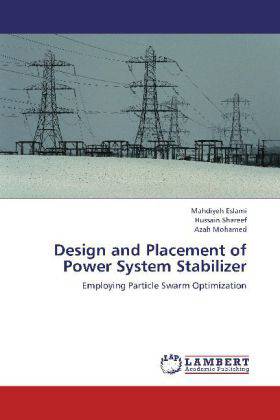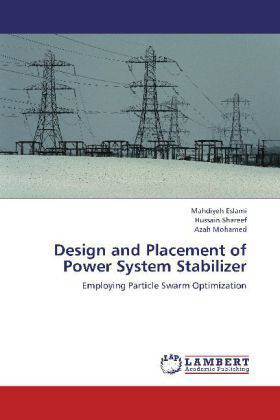
- Afhalen na 1 uur in een winkel met voorraad
- Gratis thuislevering in België vanaf € 30
- Ruim aanbod met 7 miljoen producten
- Afhalen na 1 uur in een winkel met voorraad
- Gratis thuislevering in België vanaf € 30
- Ruim aanbod met 7 miljoen producten
Zoeken
Design and Placement of Power System Stabilizer
Employing Particle Swarm Optimization
Mahdiyeh Eslami, Hussain Shareef, Azah Mohamed
Paperback | Engels
€ 58,45
+ 116 punten
Omschrijving
This book presents optimal design and best placement of power system stabilizers in multi-machine power system. Power system oscillation damping remains as one of the major concerns for secure and reliable operation of large power systems. When power systems are operating under stringent conditions, the inception of poorly damped low-frequency inter-area oscillations may lead to system-wide breakups or considerably reduce the power transfers over critical corridors. To provide fast damping for the system and thus, to improve dynamic performance, a supplementary control signal in the excitation system and/or the governor system of a generating unit can be used. Request of power system stabilizers have become the first measure to increase the system damping. The design problem of power system stabilizers can be formulated as an optimization problem and an effective optimization technique could provide a reliable solution for the problem. In addition, this book proposes an effective optimization algorithm based on particle swarm optimization with the purpose to enhance the feasibility, solution quality and convergence speed of the original algorithm for the solution.
Specificaties
Betrokkenen
- Auteur(s):
- Uitgeverij:
Inhoud
- Aantal bladzijden:
- 152
- Taal:
- Engels
Eigenschappen
- Productcode (EAN):
- 9783848426003
- Verschijningsdatum:
- 24/07/2012
- Uitvoering:
- Paperback
- Afmetingen:
- 152 mm x 220 mm
- Gewicht:
- 231 g

Alleen bij Standaard Boekhandel
+ 116 punten op je klantenkaart van Standaard Boekhandel
Beoordelingen
We publiceren alleen reviews die voldoen aan de voorwaarden voor reviews. Bekijk onze voorwaarden voor reviews.











